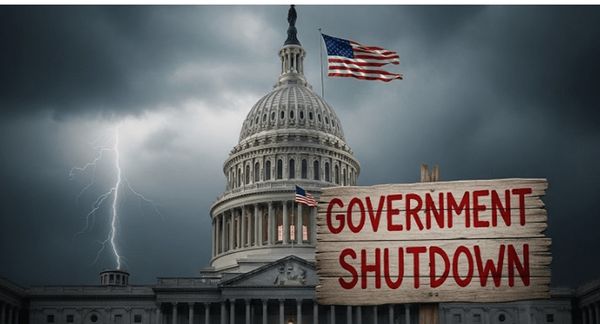The US government shutdown began as a political pressure measure, but has now turned into an economic disaster that has laid off hundreds of thousands of employees and shut down major infrastructure projects.
According to Ashura News, the US federal government has been shut down again since the beginning of October, but this time it is not just a temporary financial crisis, but a multifaceted conflict between the White House and Congress. Although previous shutdowns were seen more as leverage in negotiations, the Donald Trump administration sees this shutdown as an opportunity to redefine the role of the federal government, reduce the size of the bureaucracy, and re-prioritize budgets in order to advance its political and economic goals. According to Bloomberg, the US has faced more than 20 government shutdowns since the 1970s; But two notable examples in the past decade were the 2013 shutdown, when Republicans fought over Obamacare, and the 2018 35-day shutdown, the longest in American history, over funding for Trump’s border wall. The main difference with this new shutdown is that it is no longer just a bargaining chip, but a full-fledged federal government restructuring project, a combination of a shutdown and permanent layoffs, with funding conditional on states’ loyalty and compliance with Trump’s policies.
Politically, the shutdown is helping to fuel Trump’s “deep state” rhetoric and accuse Democrats of obstructing his reforms. On the other hand, the measure has become an electoral tool that portrays the president as a strong manager in controlling spending, although its social costs cannot be ignored. On the social side, hundreds of thousands of federal employees have faced financial instability and public services, from issuing passports to pursuing legal cases, have been disrupted. This situation could lead to increased public dissatisfaction and reduced participation in the upcoming elections, especially in politically unstable states.
Financial markets and concerns about the shutdown
Investment firm DoubleLine Capital believes that one of the most popular trades among investors this year, known as the “yield curve slope,” has been strengthened by the shutdown. The hypothesis is that long-term bond yields are rising faster than short-term bonds, driven by rising budget deficits and declining confidence in the independence of the Federal Reserve. Although this trend had weakened slightly since September, the recent shutdown has revived it, especially with the delay in the release of important economic reports such as the monthly employment figures. The result is increased volatility in the bond market and fears of rising government borrowing costs amid a growing public debt.
The dangers of the shutdown for government workers Unlike previous shutdowns, which have mostly resulted in temporary unpaid leave of absence, the White House is trying to implement permanent layoffs called “workforce reductions.” Budget Director Russell Foote has sent memos to federal agencies urging them to use the shutdown as an opportunity for organizational restructuring. The move has sparked a wide-ranging legal battle, with unions arguing that the plan to reduce staff is illegal under existing laws. The main issue at stake is whether the president can use loopholes in the Antideficiency Act to permanently change the structure of the government in this way. Notable among the shutdowns is the dramatic reduction in the number of White House staff furloughed to 32 percent, down from 61 percent in 2018. The retention of 45 people in the “Department of Government Productivity,” which has also been in place since Elon Musk’s departure, reflects a special prioritization of programs related to cost reduction and organizational restructuring. Meanwhile, the number of presidential offices has doubled compared to the 2018 shutdown, and long-term funding has been allocated to some offices. This selectivity in defining “essential” and “nonessential” employees has led to criticism that it is a political exploitation of the shutdown.
Impact of the shutdown on infrastructure and energy projects
The consequences of the shutdown are not limited to the structure of government; major projects in predominantly Democratic states have also been halted. A clear example is the $2.1 billion freeze on transportation projects in Chicago, including the expansion of the Red Line and the renovation of critical infrastructure. In New York, more than $18 billion in infrastructure projects and $8 billion in clean energy projects in other Democratic states have also been suspended. The Department of Transportation has cited the move as a review of contracts it says are discriminatory or illegal, but critics of the administration believe that the policy is a tool to punish opposing states and redistribute funds toward the White House’s priorities. The current US government shutdown is no longer just a temporary financial crisis; it is part of a broader project to fundamentally change the structure of the government, reduce the workforce, and redirect the budget to benefit the policies of the Trump administration. In addition to imposing heavy social and economic costs, this process is a sign of the depth of the political and institutional crises in the United States, the consequences of which are clearly visible in financial markets and the daily lives of citizens.


Post a comment